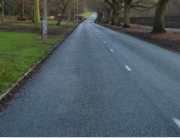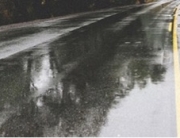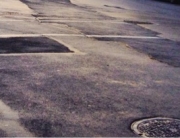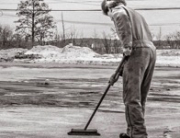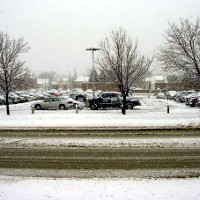 The winter months can cause considerable damage to asphalt. Cold weather and the harsh freeze thaw cycle can cause pavements to break up which, if unrepaired, can quickly get worse. After an especially harsh winter in Chicago – you won’t need reminding that it was the coldest since records began – your parking lot will likely need substantial repairs. From assessment to preparation and repair of the damaged areas, at RAPCO asphalt maintenance we can save you time and money. Crack sealing, sealcoating and pavement marking allow us to protect and extend your existing asphalt parking lot. To set you on your way, here’s a step by step guide of how we do it.
The winter months can cause considerable damage to asphalt. Cold weather and the harsh freeze thaw cycle can cause pavements to break up which, if unrepaired, can quickly get worse. After an especially harsh winter in Chicago – you won’t need reminding that it was the coldest since records began – your parking lot will likely need substantial repairs. From assessment to preparation and repair of the damaged areas, at RAPCO asphalt maintenance we can save you time and money. Crack sealing, sealcoating and pavement marking allow us to protect and extend your existing asphalt parking lot. To set you on your way, here’s a step by step guide of how we do it.
But first; why is it so important to maintain after winter? If you’re a property manager, business, building owner or multifamily community, your parking lot is the first impression clients, customers, tenants and employees see when they arrive at your premises. It should look safe, well maintained and professional – which means addressing any faults in the asphalt.
Of course, a good parking lot is not only a ‘nice to have’. As a property owner, you have a responsibility to maintain a safe parking lot area – beginning the moment anyone sets foot on the premises. If you fail to do the repairs, and you could be liable for any injuries that occur – so a proactive approach could save a great deal of time and money in the long-run!
A step-by-step guide to repairing and maintaining your parking lot.
1. Evaluate and assess the damage
To begin, you need to assess the damage that winter has caused. Start by inspecting the entire parking lot, documenting any areas where the asphalt has broken up, new cracks have formed, or there is no coverage of sealcoat. Take photographs, and make a note of the locations. The initial assessment is an important part of the repair process: you will need to understand the scale of the damage and form a scope of work.
2. Asphalt repairs
Now it’s time to do the repairs. Asphalt that has broken up or areas where potholes have formed will need to be removed and replaced. The asphalt will be taken down to the stone base and inspected to ensure proper compaction. New asphalt will then be installed, typically in two lifts, and compacted. Milling the existing asphalt to a specified depth and repaving or resurfacing the parking lot may also be an option: it all depends on the condition of the existing asphalt.
3. Crack Routing and Sealing
Existing cracks or new cracks that have formed in the pavement will need to be routed and sealed. Open cracks are an area where water can easily penetrate your asphalt – causing damage and costly repairs. The cracks are routed out and blown clean prior to installing a specialized product for parking lots. This product will remain flexible with the high and low temperatures without becoming tacky or hard. By ensuring all cracks are sealed, it will extend the life of your asphalt.
4. Sealcoating
Asphalt surfaces can be effectively protected by sealcoating which acts as a barrier between the external harmful elements like UV radiation, salts, chemicals and petroleum products. Along with this protection, sealcoat adds flexibility to the pavement. It is applied by a squeegee machine in a one or two coat process with the proper sand load. Many types of sealcoat are used to protect against the elements that lead to the degradation of your costly asphalt parking lot: at RAPCO Asphalt Maintenance we will provide the product that is of greatest benefit to your pavement.
Want to find out more about repairing and maintaining your parking lot after winter? Get in touch – our team will provide you with a free parking lot evaluation and proposal.



